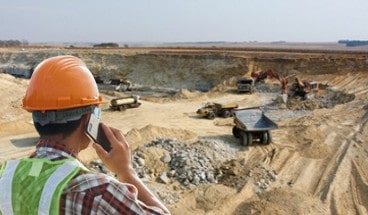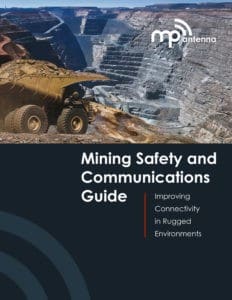Fixing Multipath Challenges in Mining and Industrial Environments
Communication networks play a vital role in managing autonomous vehicles, monitoring employee safety, and operating machinery. The challenge for any network manager is ensuring the connectivity of wireless networks. This is crucial when the WiFi and RF signals are constantly impeded by environmental conditions. The impedance creates a propagation issue known as “multipath”.

Multipath propagation results in RF signals reaching the receiving antenna by two or more paths. If the signal is traveling a greater distance, the bounce could be caused by atmospheric and ionospheric factors. In mining and industrial environments, the reflection of the signals is often caused by physical objects like water, dust, rocks, equipment, and buildings.
Multipath interference can create a number of issues in the communications channel that increases noise and reduces reliability:
- Weakening of the signal strength through phase shifting
- Inter-symbol interference (ISI) which reduces effective bandwidth
- Jamming of the receiver when the same signal arrives at different times at equal strength
The phase-shifting is the most problematic for the communications network. A horizontal signal could flip 90 to 180 degrees from its original orientation as it reflects off of physical objects. The direct and reflected signal could reach the receiving antenna at equal strength. The noise and static in the RF channel could make it unusable.
Multi-Polarized Antennas
Network engineers attempt to address the propagation issues by using equalizers in receivers. This approach attempts to counter the effect of time delays and amplitude changes in the signal. Network engineers also utilize redundancy in transmitting the data so the receiver can replace parts of the original signal that might have been corrupted.
One of the simplest and most cost-effective solutions to minimizing multipath interference is to upgrade to a multi-polarized antenna. System integrators and network managers are recommending multi-polarized antennas for several reasons:
- Utilizing all polarizations improves reception and throughput
- Minimizing amplitude changes leverages the full strength (gain) of the transmitter
- Attenuation of interference improves signal bandwidth
Rugged Wave
The multi-polarized solution keeps operations connected to personnel and machines, including driverless mining and transport machines. MP Antennas has worked with OEMs, integrators, and mining operators to develop a full line of Rugged Wave™ multi-polarized antennas.
The antennas are ideal for mining networks, port communications, industrial automation, transportation, and autonomous vehicle management. These challenging environments often require an antenna that can deliver 100,000 hours of service time.
Managing wireless networks in rugged environments is not an easy task. Working with the right network integrators and manufactures can mean the difference between failure and success. Moving to multi-polarized antennas ensures the best antenna solution will serve as the foundation of your network.

Mining Safety and Communications Guide
Learn how to improve network performance and boost connectivity in mining and industrial applications. Download the Mining Safety and Communications Guide from MP Antenna
